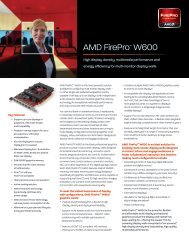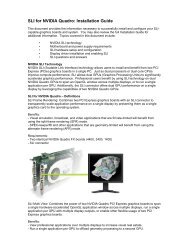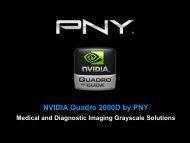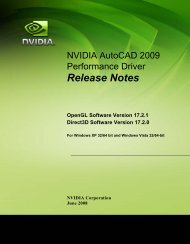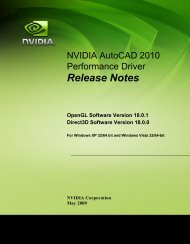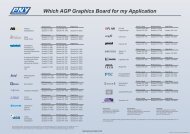NVIDIA nfiniteFX II Engine - Servodata
NVIDIA nfiniteFX II Engine - Servodata
NVIDIA nfiniteFX II Engine - Servodata
Create successful ePaper yourself
Turn your PDF publications into a flip-book with our unique Google optimized e-Paper software.
<strong>NVIDIA</strong> <strong>nfiniteFX</strong> <strong>II</strong> <strong>Engine</strong><br />
The result of their research became known as “Furry Bunny” (see Figure 2). This<br />
furry bunny, which pushed the technological envelope about a year ago, was<br />
rendered on a <strong>NVIDIA</strong> GeForce 256 Graphics Processing Unit (GPU).<br />
The furry bunny contained 5,000 faces (or Polygons), 7,547 edges, 306 patches and<br />
ran between 12 and 23 frames per second (depending on the number of concentric<br />
shells that were turned on).<br />
One of the most interesting parts of this research paper was the rendering<br />
discussion and future work sections. In these sections, the researchers discussed the<br />
current state of hair and fur rendering as well as directions of where the technology<br />
was going. The researchers specifically mentioned two key technologies:<br />
Programmable vertex shaders. Within the coming year, commodity graphics<br />
hardware will have programmable vertex shaders. Such shaders will be ideal for<br />
accelerating shell rendering, since they can directly evaluate the geometric offsets<br />
between shells, in fact using only two additional shader instructions.<br />
Programmable pixel shaders. Future programmable pixel shaders may be able to<br />
perform per-pixel lighting, which would be useful for wavy and curly hair patterns.<br />
NV Doc # - TB-00313-001 3<br />
1/16/2002




